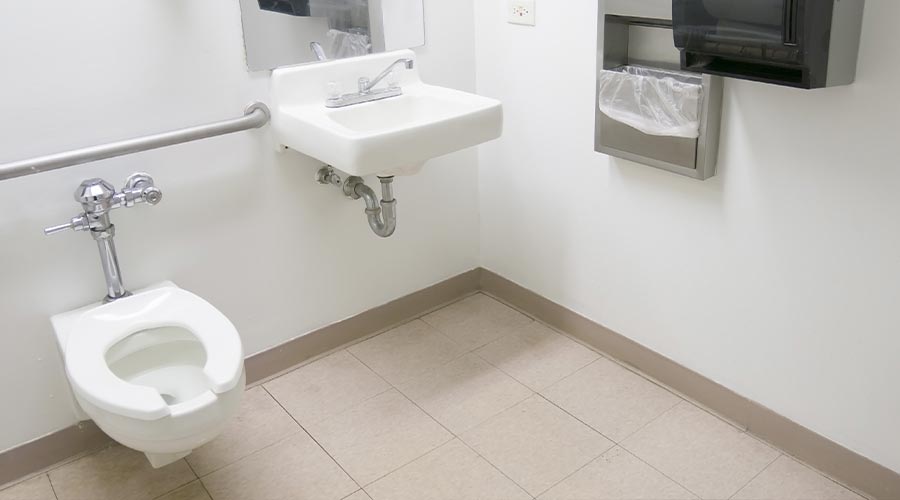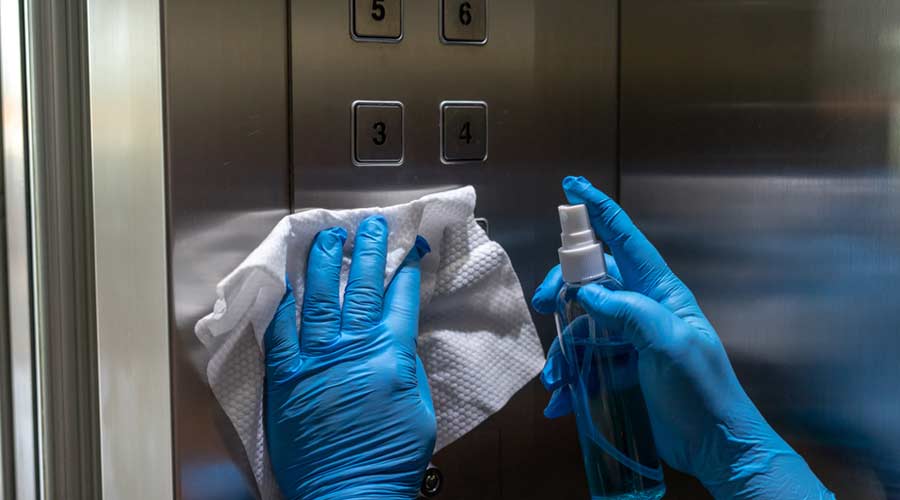
The age-old question after cleaning hands is air or paper. Allen comments that right now, he sees people using paper towels to dry hands over air dryers in about a 70/30 ratio. Part of that is simply due to the age of facilities. Not all restrooms have been wired with the power needed to run air dryers.
“For new construction or remodels, I see an upswing in using air because they’re putting electricity into the build to accommodate these drying options,” says Allen. But he adds that if facilities opt for air dryers, they must be fast and effective, or people will use it as an opportunity not to wash their hands.
Meanwhile, whether power is available or not, Duffy pushes facility customers toward paper towel options as opposed to air dryers, citing dozens of studies showing that air dryers blow germs into the air for occupants to breathe in.
He says, “The most sanitary and effective way to dry your hands is with a paper towel.”
But this often comes down to personal preference, not science. According to Paul Prince, a spokesperson for the U.S. Centers for Disease Control and Prevention, “There is currently not enough scientific evidence to determine if using a clean towel or an air hand dryer to dry your hands is more effective at reducing germs on your hands.”
That said, if using paper towel dispensers, facility cleaning managers don’t need to get fancy. Distributors recommend stub-roll systems for facilities hoping to capitalize on waste reduction and sustainability points. High-capacity dispensers are the clear choice for high-traffic facilities. And manual no-touch systems can often be the most universal.
Where experts agree is that c-fold towels provide the least amount of benefit in terms of user experience, stocking frequency, and facility budget.
Sanitizing On-the-Go
Handwashing is the best line of defense against infections. It removes germs and cleans hands. Where soap and water are available, building occupants should be encouraged to wash up.
Of course, soap and water aren’t available everywhere, so to encourage infection prevention, cleaning departments should supply hand sanitizers in strategic locations throughout the facility. Stands that supply alcohol-based hand sanitizers are recommended near facility entrances, elevators, outside restrooms, at nursing stations or in classrooms where sinks aren’t available, for example.
According to Prince, the CDC recommends that hand sanitizers should be at least 60 percent alcohol and should be used according to manufacturer directions in order to fight germs effectively (they still won’t be effective against all germs, such as Cryptosporidium,norovirus, andClostridium difficile). For example, sanitizers should be rubbed into hands until the liquid dries in order to be fully effective.
When it comes to hand sanitizer, foam is again the preferred option by the general public. It is cleaner and more cost-effective than gel, and more easily distributed. It also dries faster, making it more appealing to users.
“I’m not an advocate of liquid in a large setting or of pumps or bottles in a public setting,” Allen says. “That’s just asking for spills, accidents, breaking the top of the pump, etc.”
Instead, he recommends wall-mounted dispensers in rooms or corridors. When that isn’t possible, installing touch-free stands with drip trays and signage is the way to go.
Most building occupants are aware of proper handwashing techniques, so sometimes signage seems like a waste of time. However, it’s often necessary to meet requirements from the Occupational Safety and Health Association (OSHA) and other regulatory agencies. While it might be in place to instruct employees to wash their hands before returning to work, signage serves as a reminder for everyone else.
“It’s kind of great if there’s intriguing signage to enhance their hand hygiene, especially for children,” says Allen. “For adults, it’s good to have a reminder.”
Signage should include information about the 20-second rule, encouraging facility users to scrub their hands with soap for at least 20 second before rinsing and drying them. Illustrations can add interest and help mitigate any language barriers.
By making hand hygiene convenient and accessible, overall health and safety outcomes can improve dramatically.
Caryn Jones is a freelance writer based in Centennial, Colorado.
Easy Ways to Make Handwashing Convenient and Consistent

 The Down and Dirty on Cleaning in Virus Season
The Down and Dirty on Cleaning in Virus Season How Surfactant Use is Expanding in Commercial Cleaning
How Surfactant Use is Expanding in Commercial Cleaning Operational Excellence Series 2025: Better Budgeting
Operational Excellence Series 2025: Better Budgeting